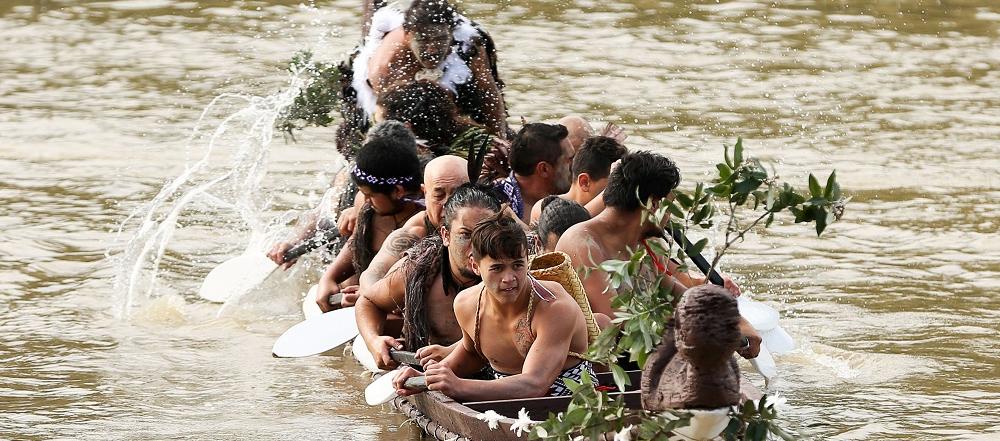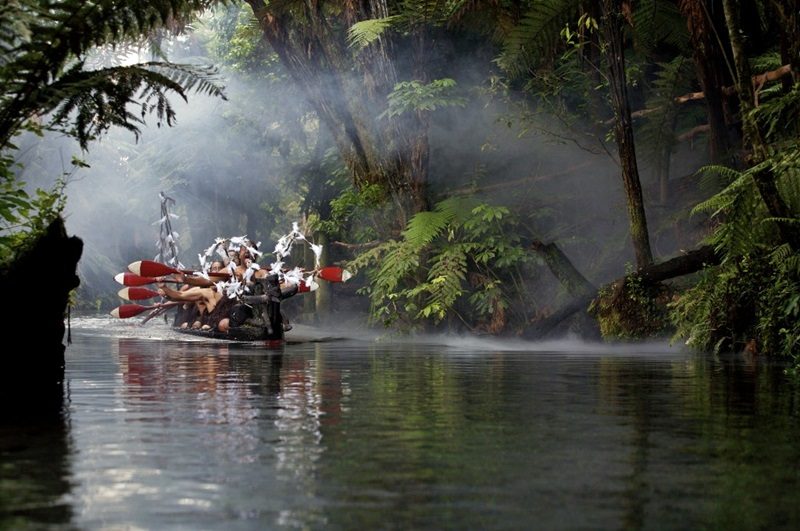For the Maori people of New Zealand, like many of the world’s indigenous communities, their relationship with the natural world is earning them recognition as vital stewards of the environment and its fast-depleting resources.
In a world first this year, one of the local Maori tribes in the country’s North Island won a 140-year-old battle for recognition of their river as an ancestor. The new status for the Whanganui River – the country’s third-largest – now means if it is harmed in any way, for example, degradation of its waters, the new law will consider the harm inflicted on the river the same as it would a real person.
“We can trace our genealogy to the origins of the universe,” said Gerrard Albert, a Whanganui tribal leader. “And therefore rather than us being masters of the natural world, we are part of it. We want to live like that as our starting point.
“And that is not an anti-development, or anti-economic use of the river, but to begin with the view that it is a living being, and then consider its future from that central belief.”

In Maoridom, the set of beliefs that guide Maori culture, humans are considered equal to and at one with the land, sea and rivers. The idea is reflected in the Maori word ‘kaitiakitanga’, which means guarding and protecting the environment in order to respect ancestors and ensure its protection for future generations.
The intimate relationship Maori have with their natural world is shared by many other indigenous peoples around the world. And the role indigenous peoples play as custodians of the land and the traditional knowledge that underpins it, is gaining recognition along with their rights to ancestral lands and the resources they contain.
“Indigenous peoples’ knowledge of how to protect the delicate balance of natural resources for generations to come is finally being recognized,” said head of UN Environment Erik Solheim. “This vital knowledge stands equal to science in the role it must play if we are to take meaningful action world-wide towards the essential protection of our environment.”
The world’s 370 million indigenous people are only 5 per cent of the total population but they officially hold 18 per cent of the land and lay claim to far more. Their home areas across 70 countries from the Arctic to the South Pacific include many of the planet’s biodiversity hotspots.
A report by the World Resources Institute last year identified securing the land rights of indigenous people and other local communities in the Amazon region as a low-cost way to counter global deforestation and climate change.
For example, deforestation rates inside tenured indigenous forests were 2-3 times lower than outside in Bolivia, Brazil and Colombia from 2000-2012. Yet indigenous peoples and communities globally have secured tenure for only a fraction of their lands, the report said.
The rights of indigenous people are now enshrined in documents such as the United Nations Declaration on the Rights of Indigenous People, approaching its 10th anniversary on 13 September this year, and reflected in the policies of governments and the strategies of conservation organizations.

The Declaration is the most comprehensive international instrument on the rights of indigenous peoples. It embodies global consensus on their rights and establishes universal minimum standards for their survival, dignity and well-being. It elaborates on existing human rights standards and fundamental freedoms, as they apply to the specific situation of indigenous peoples.
Over the last decade, the implementation of the Declaration has achieved some major successes at the national, regional and international levels. But despite the achievements, there continues to be a gap between the formal recognition of indigenous peoples and the implementation of policies on the ground.
“We have been here forever and we know the natural cycle of things,” said Maori leader Catherine Davis. “We know when there is a blip, we know when there is a glitch. We know when something is going down in terms of sustainability. So we need to be heard more clearly.”
Source: UN Environment
